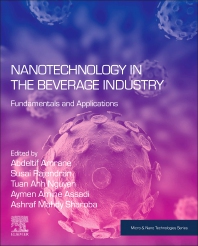Chocolate captures more than lovers

This year, beverage-makers predicted that chocolate flavors would be among their top-selling flavors in Beverage Industry’s 2010 New Product Development Survey. It’s no wonder then that chocolate ingredients and flavors appeared in 85 new beverage launches through the end of September, according to Chicago-based Mintel International’s Global New Products Database.
Chocolate ingredients and flavors most often appeared in new malt and hot beverages, followed by coffee, meal replacement beverages and beverage mixes. Chocolate ingredients and flavors also could be found in new teas, beers, vodkas, energy drinks and liqueurs this year, Mintel reported.
Chocolate has remained one of the most popular flavors in beverages because of its familiarity with consumers.
“Chocolate is something that everyone can identify with,” says Jeff Craig, director of business development at Sethness Greenleaf Inc., Chicago. “It is known literally around the entire globe and in all different types of applications. Besides chocolate itself being a wonderful profile, it’s still popular because it also works well in many different applications, not just in beverages, but it also goes well with a variety of different ingredients that you’re putting into your beverage.”
In recent years, chocolate has benefitted from its perception as an indulgence and now for its healthy attributes.
“The newly found healthy attributes of chocolate have broadened its application and therefore its exposure to consumers who may otherwise have either not [consumed] or limited their consumption,” says Tony Moore, chief flavorist at Flavor Producers Midwest Laboratory, Cincinnati.
One can never discount chocolate because of its indulgent nature, but consumers’ knowledge of chocolate’s antioxidant properties, specifically in dark chocolate, has caused it to rise, Craig says. “Folks are putting together all types of different products looking at dark chocolate because of the public’s perception of its antioxidant properties,” he says.
Dark chocolate’s antioxidant attributes definitely led to more interest in the variety, Moore says.
“The higher levels of healthy components such as antioxidants and polyphenols in dark chocolate as compared to milk and other chocolates is one obvious reason for its increased consumer interest, but what is interesting is the success of also marketing dark chocolate as ‘richer’ and ‘more indulgent’ when it actually contains less fat and sugar than milk and other chocolates,” he says.
Although interest in dark chocolate has risen in new research and development products, that isn’t to say that interest in milk and other chocolate profiles has declined. “Chocolate is always going to be a staple flavor,” Craig says.
Chocolate cravings
Whether by itself or blended with other flavors, the sky is the limit for flavor combinations with chocolate. Caramel, butterscotch and dulce de leche are confectionary flavor combinations that also work well in beverage applications, especially liqueurs, Craig says. Red berries, such as raspberry, strawberry and cherry, also are blended with chocolate in liqueurs and other alcohol beverages, he says.
The traditional combination of nuts, such as almonds, hazelnuts and peanuts, continue to be used, but beverage-formulators also are exploring more interesting combinations such as blackberry, maqui berry, acai, florals and spices, Moore says. Savory spices, such as spicy red chili, are another flavor group Craig has seen blended with chocolate.
While Flavor Producers has seen a slight increase in beverage research and product development involving chocolate, it has not necessarily seen an increase in new product introductions involving chocolate. “An exception to this is several new bagged tea products containing cocoa nibs, cocoa powder and chocolate flavors,” Moore says.
Other beverage-makers are being innovative with their use of chocolate, too. “I have some microbreweries right now that are using my chocolate flavors to try and make that in a microbrew of beer,” Craig says.
More traditionally, chocolate often is the first flavor request Sethness Greenleaf receives when beverage-makers are formulating meal replacement, protein-enhanced and other functional beverages. Sethness Greenleaf also developed a new version of a semi-sweet chocolate chip profile that encompasses the roasted milk chocolate notes found in the consumer favorite, Craig says. The company also revised its dark chocolate flavor to have a more nutty, bittersweet profile that can be found in many cocoa powders.
Flavor Producers recently developed Trü Brüz, a new line of cocoa, coffee and tea extractives in essence, extract and with other natural flavors forms. Trü Brüz products first undergo a fresh brewing process before extraction, and the process captures the fresh brewed flavors naturally in a liquid, water soluble form that makes it easy and commercially feasible for a beverage-developer to deliver a fresh brewed flavor in a bottle, Moore says. BI
Related Links: Category Focus: Protein appeals to the masses
Ingredient Spotlight: Coffee’s buzz continues to grow
Beverage R&D: Flavor innovation grows reach
Looking for a reprint of this article?
From high-res PDFs to custom plaques, order your copy today!





